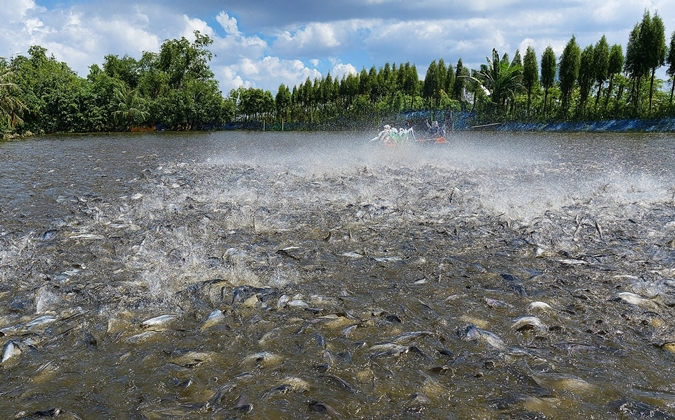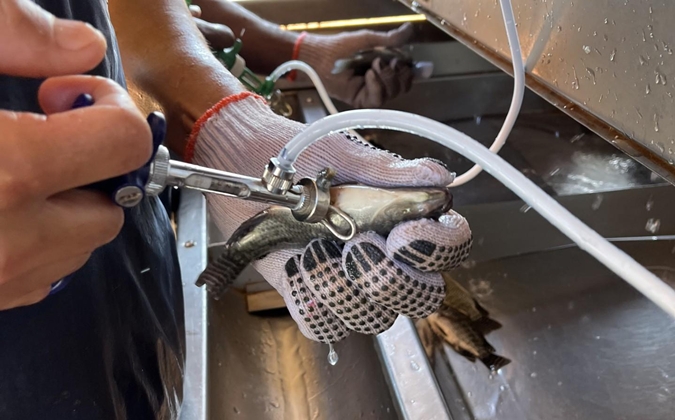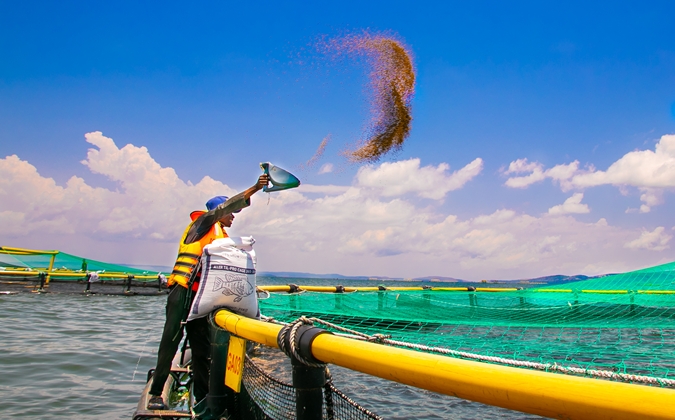
Could nanobubbles really revolutionize aquaculture?
Research is showing that nanobubble technologies can dramatically reduce disease risks on fish farms and potentially curb the need for antibiotics.
However, a recent review advises some caution. These technologies hold huge promise but are still in their infancy, and many questions remain unanswered on their safety, efficacy and economic feasibility, the US authors wrote.
Nanobubbles’ promise for sustainable disease management on fish farms
Nanobubbles are microscopic pockets of air or individual gases, such as oxygen or ozone. Infused into water, they are designed to support a healthy environment for fish. They are far smaller than bubbles produced by conventional aeration methods — just 1 micrometer in diameter. And their size allows them to linger much longer in water (for days to months), transfer gas more efficiently and produce molecules with disinfectant powers.
They have been described in various corners as a “game changer” for aquaculture. By potentially reducing farmers’ reliance on chemicals, energy and antibiotics, they could enhance sustainability and, consequently, support the industry’s growth.
The comprehensive review, led by scientists from the University of Maine, saw them pore through over 100 studies from the last decade. The body of work showed that nanobubbles usually benefit fish and their farmers, and led the authors to concur that nanobubbles are, indeed, potentially game changing.
How can nanobubbles support fish health?
The studies in the review highlight ways in which nanobubbles could support fish health and growth:
- Stronger immune systems. Nanobubbles may support fish’s immune systems and, in turn, reduce farmers’ reliance on antibiotics. Low oxygen levels in water weaken fish’s immune systems, but these tiny bubbles boost levels of dissolved oxygen. Studies on oxygen delivery are scarce, but available evidence suggests that nanobubbles can raise dissolved oxygen levels by over four times, from 7.7 mg per liter to 32 mg.Research hints at the benefits of these higher dissolved oxygen levels. One study found that ozone nanobubbles activated the innate immunity genes of Nile tilapia against the bacterium Streptococcus agalactiae — which can be fatal. This result allowed the authors to implement a simpler, cheaper — yet still effective — vaccination strategy.Another study showed that nanobubbles can increase probiotics in shrimp guts, strengthening their defenses against disease.
- Improved growth. One study found that shrimp reared under pure oxygen nanobubbles in indoor ponds were bigger than those in ponds aerated by larger bubbles. Total harvest and productivity doubled thanks to the higher levels of dissolved oxygen in the water that supported the shrimps’ growth.
- Cleaner water. Nanobubbles help remove farm effluent. This cuts the risks of oxygen depletion and toxic algal blooms, and lowers nitrogen (one of the main causes of death in aquaculture), including ammonia. A study found that oxygen nanobubbles removed up to 83% of ammonia in catfish hatchery water within 45 minutes.
- Fewer harmful bacteria. Nanobubbles show strong potential as a disinfectant. One study sterilized 100% of Vibrio parahaemolyticus — the bacterium that causes vibriosis diseases — from a shrimp tank within minutes using ozone nanobubbles. Another study found ozone nanobubbles removed nearly all agalactiae and Aeromonas veronii from tanks used for rearing Nile tilapia.
A word of caution
Despite these impressive results, nanobubbles remain a nascent technology. The researchers found no examples of technologies in full-scale use — only those in experimental and pilot-stage phases of development.
“There is still a long way to go before nanobubbles become a practical reality,” the authors wrote. They warned that they are not without risks, and some of their impacts need proper controls to ensure the well-being of livestock. Gas-bubble disease can occur when water becomes overloaded with gases, for example, and ozone can be toxic.
They also stressed that very few studies compare nanobubble technologies with traditional aeration methods, whether in terms of effects, risks, cost-effectiveness or energy consumption. “This makes it difficult to gain a clear picture of the real potential of nanobubbles,” they said, meaning that more long-term, detailed studies are needed.
You can read the full journal article in Science of The Total Environment.
Posted on: February 19, 2025






